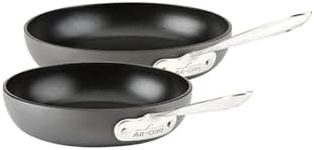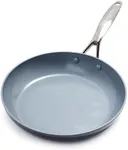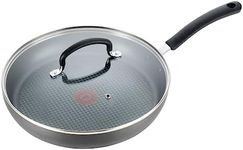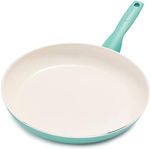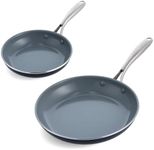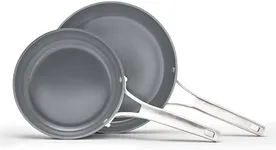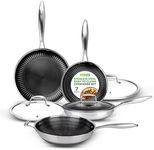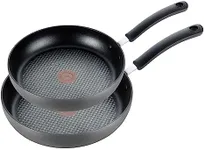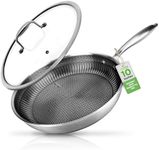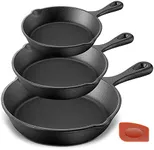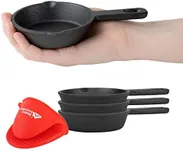Buying Guide for the Best Non-Stick Skillets
Choosing the right non-stick skillet can make a significant difference in your cooking experience. Non-stick skillets are designed to prevent food from sticking to the surface, making cooking and cleaning easier. When selecting a non-stick skillet, it's important to consider several key specifications to ensure you get the best fit for your cooking needs. Here are the key specs to look out for and how to navigate them.MaterialThe material of a non-stick skillet affects its durability, heat distribution, and overall performance. Common materials include aluminum, stainless steel, and hard-anodized aluminum. Aluminum is lightweight and heats up quickly, making it ideal for everyday cooking. Stainless steel is more durable and resistant to scratches but may not heat as evenly. Hard-anodized aluminum offers a balance of durability and even heating. Choose a material based on your cooking habits and how often you plan to use the skillet.
Non-Stick CoatingThe type of non-stick coating determines how well food releases from the skillet and how easy it is to clean. PTFE (Teflon) and ceramic are the most common coatings. PTFE provides excellent non-stick properties but can degrade at high temperatures. Ceramic coatings are free from synthetic chemicals and can withstand higher temperatures but may not be as durable. If you frequently cook at high temperatures, a ceramic coating might be better. For everyday low to medium heat cooking, PTFE is a good choice.
SizeNon-stick skillets come in various sizes, typically ranging from 8 to 14 inches in diameter. The size you choose should depend on the number of people you cook for and the types of dishes you prepare. An 8-inch skillet is suitable for single servings or small meals, while a 10-inch skillet is versatile for most cooking needs. A 12-inch or larger skillet is ideal for family-sized meals or cooking larger portions. Consider your usual cooking volume and choose a size that fits your needs.
HandleThe handle of a non-stick skillet affects comfort and safety during use. Handles can be made from stainless steel, silicone, or plastic. Stainless steel handles are durable and oven-safe but can get hot. Silicone and plastic handles stay cool to the touch but may not be oven-safe at high temperatures. If you plan to use the skillet in the oven, opt for a stainless steel handle. For stovetop use, a silicone or plastic handle can provide better comfort and safety.
Oven-Safe TemperatureThe oven-safe temperature indicates the maximum temperature the skillet can withstand in the oven. This is important if you plan to use the skillet for recipes that require finishing in the oven. Most non-stick skillets can handle temperatures up to 350°F to 500°F. If you frequently cook dishes that require high oven temperatures, choose a skillet with a higher oven-safe rating. For stovetop-only use, this spec may be less critical.
Compatibility with CooktopsNot all non-stick skillets are compatible with every type of cooktop. Some are designed specifically for gas, electric, or induction cooktops. Induction cooktops require skillets with a magnetic base. Check the manufacturer's specifications to ensure the skillet is compatible with your cooktop. If you have an induction cooktop, make sure to choose a skillet labeled as induction-compatible. For gas or electric cooktops, most non-stick skillets will work fine.
